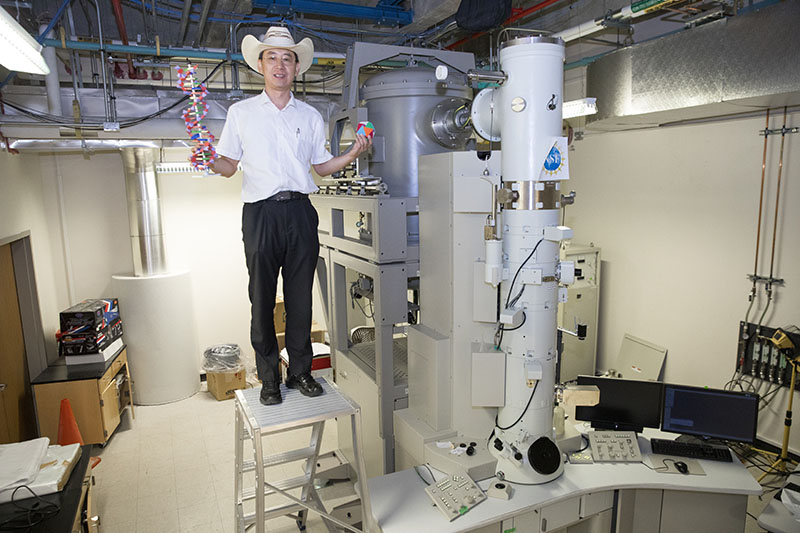UTEP Professor Awarded $1.7M Grant to Decipher Molecular Assembly Mechanism of Giant Virus
Last Updated on July 22, 2019 at 12:00 AM
Originally published July 22, 2019
By UC Staff
UTEP Communications
Chuan Xiao, Ph.D., associate professor of biochemistry at The University of Texas at El Paso, was awarded a $1.7 million grant from the National Institutes of Health’s National Institute of General Medical Sciences to continue research of the giant marine virus Cafeteria roenbergensis (CroV).

In 2017, Xiao raised a complete new spiral hypothesis of the assembly mechanism for giant viruses based on the cryogenic electron microscopy (cryo-EM) structural study of CroV. Although the marine virus CroV is not a human pathogen, many viruses’ protein shells, including many other pathogenic viruses, are assembled from similar building blocks.
In addition, CroV is structurally very similar to African swine fever virus (ASFV), which has recently infected pigs throughout Asia. Thus, deciphering the assembly of CroV could lead to deciphering the assembly of other viruses. Xiao’s findings could lead to development of medicine to treat viral diseases.
“Deciphering the rules and conditions for giant virus assembly will lead to new therapeutic targets against viral diseases in general,” Xiao said. “By understanding the assembly of giant viruses, we can mimic the process and design virus-like nanoparticles that can have many different usages in biomedical or other fields.”
Xiao is conducting his research in the structural biochemistry laboratory at UTEP’s Department of Chemistry and Biochemistry using a high-end electron transmission microscope that cost $1.8 million when it was acquired in 2009. The microscope is housed in a room that was designed specifically to avoid physical vibration and electromagnetic changes.
CroV is the first giant virus reported to infect zooplankton and is one of the largest viruses that has been structurally studied to high resolution. To retrieve samples of CroV for cryo-EM studies, many liters of marine zooplankton are cultured in artificial seawater in the lab.
The physical size and structural complexity of giant viruses are approaching those of small cells. Since the discovery of giant viruses such as the massive Mimivirus, Xiao is one of very few experts studying giant viruses in the world due to the challenge they pose to current structural determination techniques.
“Techniques and methods developed in this study will push the limit of current structural biology and provide useful tools to study even larger supramolecular assemblies and eventually the whole cell in the future,” Xiao said.